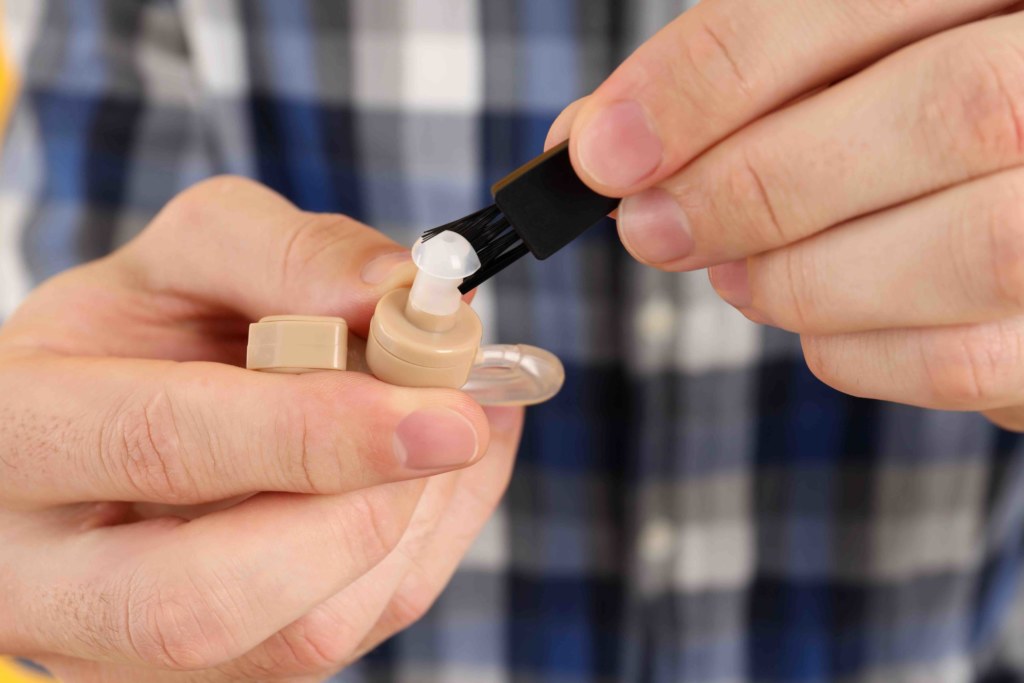Key Takeaways
We’ll cover the following tips you can use to keep your hearing aids clean and well maintained:
- General cleaning and maintenance tips for all hearing aid models
- Steps to clean behind-the-ear (BTE) and receiver-in-canal (RIC) hearing aids
- Steps to clean in-the-ear (ITE), completely-in-the-canal (CIC), and in-the-canal hearing aids
- When to have your hearing aids cleaned by a professional
Regular cleaning to remove earwax, dirt, and other debris help keep your hearing aids functioning at their optimal level for many years.
Basic Hearing Aid Cleaning Tools You’ll Need
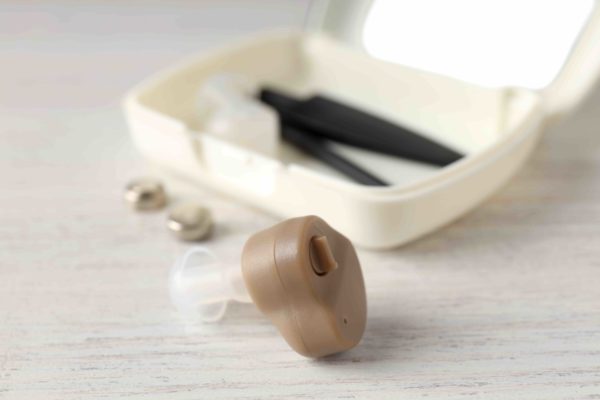
Cleaning your hearing aids is a simple process that can be done at home. It’s crucial to have the right tools and use proper cleaning methods. If not, you may damage your hearing aids. You’ll need the following tools:
- Wax pick or wax loop: a thin tool (usually metal or stainless steel) with a small loop or pick at the end that is used to clean wax in small openings or corners
- Wax brush: a soft brush with bristles that is used to remove wax and debris (you can also use a new, unused child-size toothbrush)
- Soft, dry cloth: always use a dry, lint-free cloth that doesn’t leave behind small fibers
- Ventilation cleaner: these resemble small pipe cleaners and clean earwax and moisture from the vent area
- Drying station: a small case that removes moisture from your hearing aids. It can double as a carrying case.
You can buy these tools individually or in a hearing aid cleaning kit. You can shop for a kit online, at your local drugstore, or purchase one from your hearing professional. Hearing aid cleaning kits cost around $15-$50, or more, depending on the quality and tools included.
If an all-in-one cleaning tool is your style, consider using a multitool that combines common cleaning tools, like a wax brush, wax pick, and ventilation cleaner. Some even contain a magnetic device that helps you remove hearing aid batteries. You can also find multitools online, at the drugstore, or at your local hearing health clinic.
Now that you know how to find the right cleaning tools, let’s learn how to use them.
General Cleaning Best Practices for All Models
While you don’t need to do an intensive daily cleaning of your hearing aids, it is always a good idea to wipe them with a dry, lint-free cloth when removing them at the end of each day. Then, you can save your thorough, at-home cleaning for once a week.
Keep an eye on wax and debris buildup on your microphone since it’s the closest tool to your ear canal. In order to clean the microphone, softly brush off any noticeable wax with your wax brush when you remove your hearing aids.
Remove dirt and debris buildup with your wax pick or loop at least once a week. If you have a wax guard, replace it every two months or once it becomes too difficult to clean.
Only use the above-recommended tools and follow your hearing care expert’s additional cleaning or care instructions. Clean your hearing aids over a towel or other soft surface to help protect them if you accidentally drop them.
It is also a good idea to ask your audiologist which brand of cleaning wipes they recommend if you need to disinfect your hearing aids.
Avoid These Cleaning Methods And Equipment
Hearing aids are powerful devices, but they can be damaged if cleaned improperly. Never use your wax pick or loop around sensitive areas, like the microphone and receiver. Instead, clean these items with your wax brush.
Only use cleaning wipes designed for hearing aids—alcohol- or other chemical-based wipes will damage the equipment. Don’t clean your hearing aids with water or a damp cloth, even if they’re water-resistant. The earmold is the only piece that can be cleaned with warm, soapy water—and only when it’s detached from the rest of the hearing aid.
Regular cleaning and proper maintenance will extend the life of your hearing aids and help you hear more clearly. It will also stop bacteria buildup that can cause painful ear infections. Outside of general cleaning and maintenance, specific steps you should take for cleaning your hearing aid will depend on the exact model.
How to Clean Behind-the-Ear (BTE) and Receiver-in-Canal (RIC) Hearing Aids
Both BTE and RIC hearing aids are placed on top of the outer ear and transmit sound to the ear canal. BTE hearing aids route sound to the ear canal with a small tube that connects to a dome or earmold. RIC hearing aids route transmit to the ear canal with a small wire instead of a tube, and the earpiece is usually smaller than BTE hearing aids.
You should have your hearing aid cleaned by a professional every three, six, or twelve months, depending on your model and specific needs.
BTE hearing aids are appropriate for most types of hearing loss, while RIC hearing aids are suited for mild to severe hearing loss. Both models typically use rechargeable batteries.
While they both have similar placement on the ear, some cleaning instructions for BTE and RIC hearing aids vary since they have different equipment that goes inside the ear.
Steps For Cleaning BTE Hearing Aids
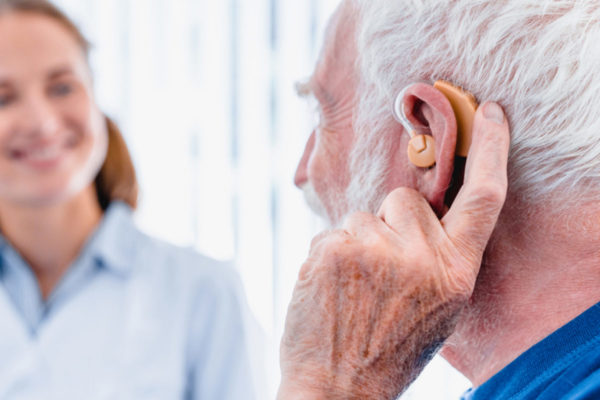
- Gently brush microphone ports so that incoming sound will be as clear as possible.
- Brush the entire hearing aid, including the earmold or dome.
- Use your wax loop or wire to clean out the wax in your earmold’s air vent.
- Use a bulb blower to blow air through the tubing to dry out any built-up moisture.
- Replace your tubing when it’s no longer soft and pliable or is too dirty to clean.
Steps For Cleaning RIC Hearing Aids
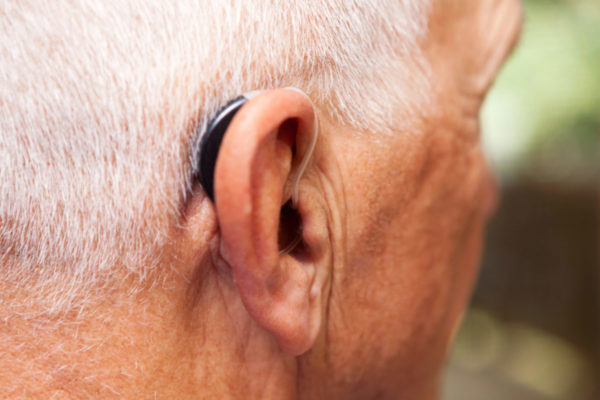
- Gently brush microphone ports so that incoming sound will be as clear as possible.
- Brush the entire hearing aid, including the rubber ear dome.
- Wipe down the ear dome with a soft, dry tissue or wax brush.
- Pick out any stubborn wax buildup in the ear dome with a wax loop or wire.
- Remove the ear dome and clean the wax guard with a wax pick.
If the rubber ear dome or mold in either your BTE or RIC hearing aids is very dirty, you can remove it from the rest of your hearing aid and wash it with warm, soapy water. It is also important to remember, not to reattach the ear dome or mold to your hearing aid until it’s completely dry.
How to Clean In-the-Ear (ITE), Completely-in-the-Canal (CIC), and In-the-Canal (ITC) Hearing Aids
ITE, CIC, and ITC hearing aids are smaller than BTE and RIC hearing aids and don’t have a piece resting on the outside of the ear. All three of these small hearing aids are custom fit to your ear or ear canal.
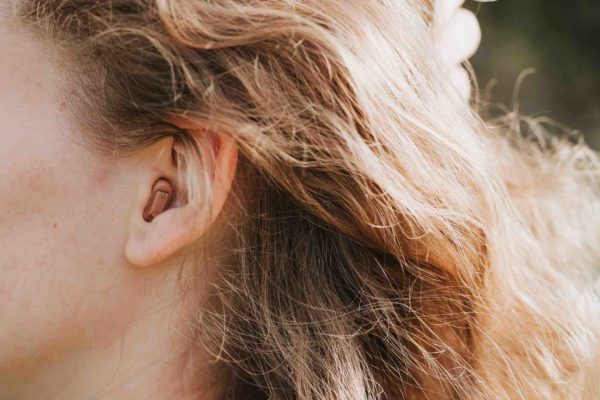
- ITE hearing aids are molded into either a full shell (to fit your outer ear) or half shell (to fit your lower ear) shape. They are suitable for mild to severe hearing loss.
- CIC hearing aids fit entirely in your ear canal and address mild to severe hearing loss.
- ITC hearing aids sit partially in your ear canal and improve mild to severe hearing loss.
ITE, CIC, and ITC hearing aids are exposed to more moisture and earwax than BTE or RIC hearing aids since they sit completely in or partially in your ear canal.
All three hearing aid models have similar cleaning steps:
- Gently brush the entire shell, including microphone ports.
- Open the battery door and brush any built-up wax or debris inside.
- Clean the vent opening with your vent cleaner or wax pick/wire, depending on the vent’s size.
- Wipe the entire hearing aid with a soft, dry cloth.
Do not use water or non-hearing aid cleaning wipes to clean these models.
When To Get Your Hearing Aids Cleaned by a Professional
You should have your hearing aid cleaned by a professional every three, six, or twelve months, depending on your model and specific needs. For example, if you have ITE hearing aids and produce excessive wax, you’ll probably need to get your devices professionally cleaned more often than someone with BTE hearing aids who produces less wax.
Hearing professionals remove wax from more delicate and hard-to-reach areas with a special vacuum. They will also carefully clean your microphones, vents, and receivers and can use a professional dryer to prolong the life of the electronic components. Establish a consistent cleaning schedule with your hearing care provider.
Basic Hearing Aid Maintenance Tips
Keep your hearing clear and sharp with consistent cleaning and careful hearing aid maintenance. Avoid leaving your hearing aids in extreme heat or cold—if you need to remove your hearing aids for certain activities, don’t leave them out. Store them safely in your case.
Consider investing in a dryer or dehumidifier to keep moisture out of your hearing aids if you live in a humid, wet climate.
